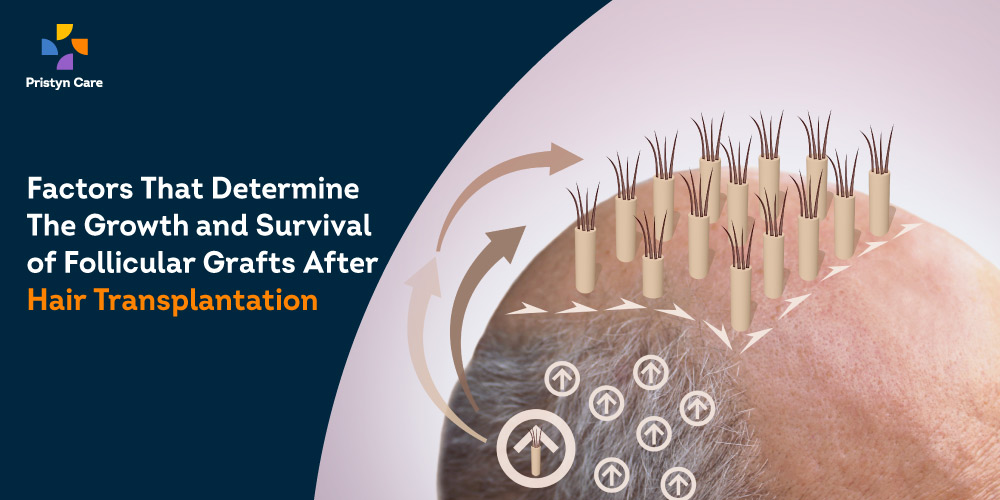
It is common for people undergoing hair transplantation to get concerned about the growth and survival of their hair grafts. However, in the current scenario, the survival rate of hair grafts is 90 percent to well over 100 percent.
This article intends to educate the readers on the anatomy of hair, the anatomy of hair follicles, and some medically-proven factors that affect the growth and survival of follicular grafts after hair transplantation.
Table of Contents
Anatomy of hair
Hair is a derivative of the epidermis and consists of two important parts – the follicle and the hair shaft. Human hair is made up of a tough protein called keratin. A hair follicle anchors each hair into the skin. The hair bulb forms the base of the hair follicle. The living cells divide and grow in the follicle to build the hair shaft. Blood vessels nourish the cells in the hair bulb. The blood vessels modify hair growth and structure throughout life.
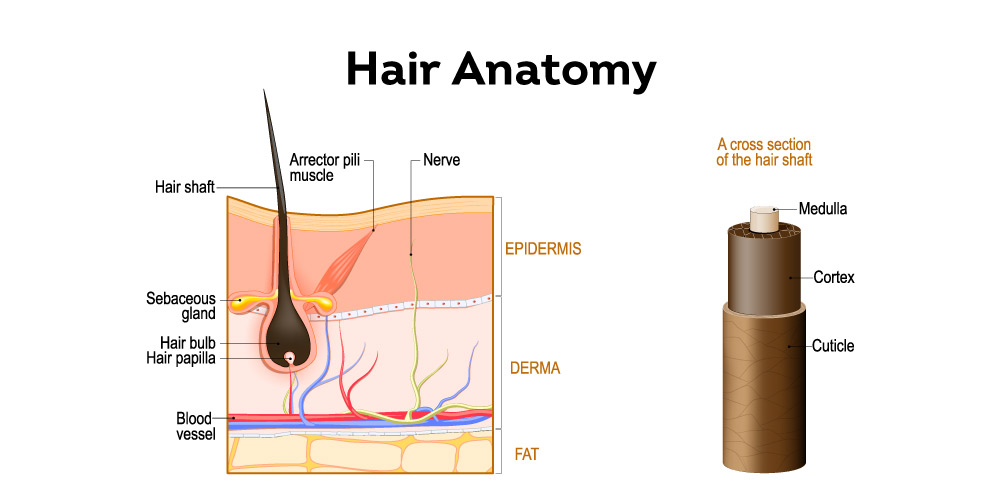
Anatomy of a hair follicle
A hair follicle is a tunnel-shaped structure that lies in the outer layer of the skin (epidermis). The follicle is where the hair starts growing. The root of the hair is made up of protein cells and is nourished by blood from nearby blood cells.
Hair follicles determine the growth of the hair, how long the hair grows, and what the hair looks like. The shape of the follicle also determines how curly your hair is. For example, if the strand is circular, it produces straight hair. On the other hand, oval follicles have curly hair. Furthermore, the follicles also determine the color of the hair.
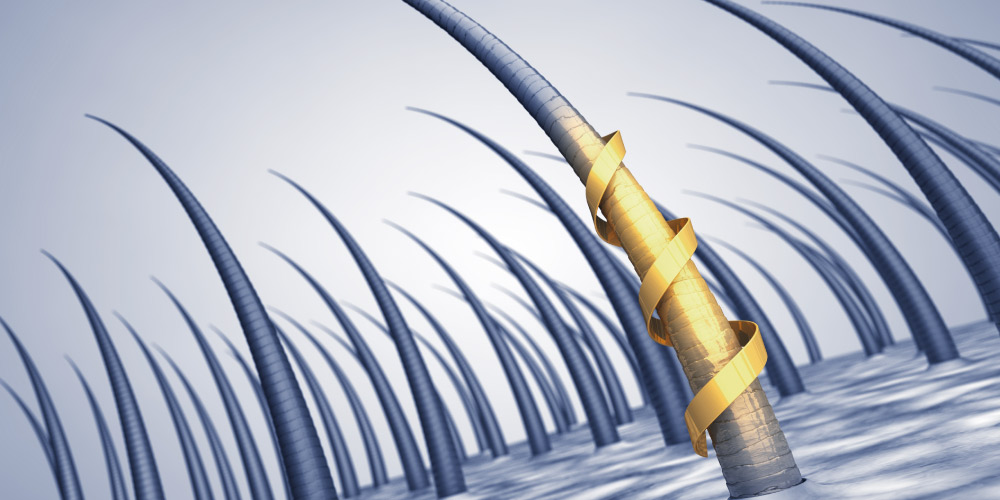
What happens in hair transplantation?
Hair transplantation involves the removal of small punch grafts from the hair-bearing scalp from a donor area, cutting it into smaller pieces, and then relocating it to a thin or bald area of the scalp. The grafts are created based on individualized needs and may differ in size and shape. Usually, the round-shaped grats contain 10-15 hairs. The smaller grafts have 2-3 hairs.
In hair transplant surgery, the doctor first trims the donor area to access the grafts and remove them. Then, the hair transplant doctor uses a tube-like instrument to punch the grafts from the donor site. In other cases, the doctor uses a scalpel to remove small sections of the hair along with the scalp, divides it into tiny sections, and transplants it into tiny holes within the scalp of the receiver or the scalp where the transplant is required.
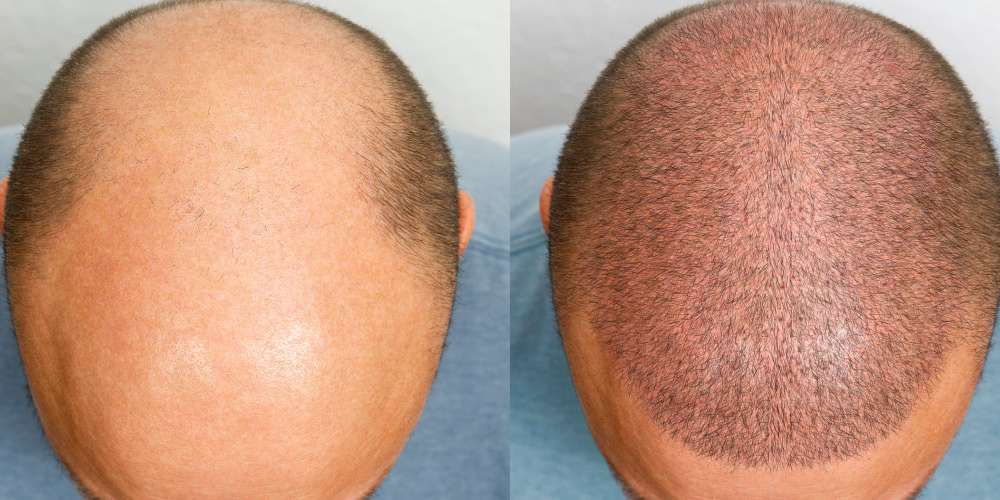
Factors that determine the growth and survival of the follicular grafts
There is a common concern for every individual regarding how the follicle will continue to grow and survive. Here are a few factors that affect and determine this:
Issues with donor scalp
The hair follicles of individuals with androgenic alopecia turn ‘miniature’ and either disappear or become vellus hair (light, brittle hair). The follicles in people with this condition decrease and disappears in the long run. The follicles of an optimal donor area or healthy follicles relatively stay protected, although they may also get affected in the long run. If the follicles removed from the donor site or donor scalp are robust, it has better hair transplant survival than weaker hair follicles.
Medicines like Finasteride and Minoxidil can somewhat improve the quality of weaker hair follicles, but that is likely to be a lifelong treatment. Furthermore, if the donor follicles are miniature, once the grafts are transplanted, they may weaken in no time and fail to aid the growth and sustainability of the hair. Due to this reason, it is crucial to evaluate the quality of the donor scalp and donor follicles.
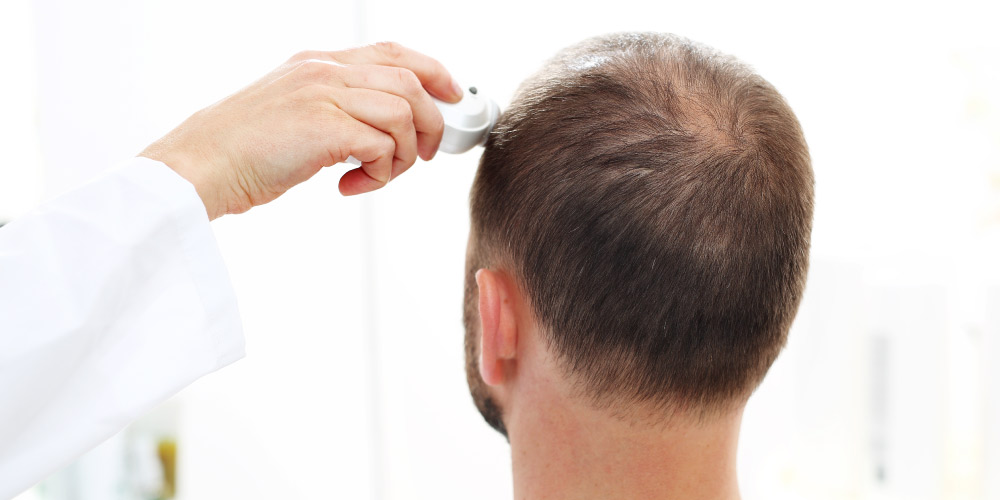
In the words of Dr. Ashwini Kumar, Plastic Surgeon at Pristyn Care says, “Checking the quality of the hair is very important, but most of the time, this step is ignored. If the donor area has very fine, weak hair, it may result in poor survival of the graft after transplantation. The growth challenge also lies in maintaining the hairline design after the transplantation. This is why strong follicles are necessary for the procedure.”
Factors of the surgery day
The day of the hair transplant goes a long way to determining the procedure results. The hair that is implanted takes almost 3 days to regain blood supply. In addition, external stress factors during the intra-operative and post-operative periods may affect the growth or death of the hair graft. Common external factors include mechanical trauma, dehydration, ATP depletion, cold injury, and lactic acid accumulation.
According to NCBI reports, several medical studies documented the loss of follicular grafts due to external physical factors such as dehydration. Medical reports also suggest that chilling of the grafts may protect the follicle from trauma.
The survival time of a follicular graft in a dry environment may range from 3 minutes to 16 minutes before the graft dies.
Forceful and blunt trauma to the ‘bulb region’ of the hair (base of the follicle) and the bulge zone (the region between the opening of the sebaceous gland and the arrector pili muscle’s attachment site) may result in loss of follicular survival.
Also read: Dos and don’ts after hair transplantation
Temperature and storage duration
NCBI reports studies where temperature (chilled or room) has different effects on follicular growth and survival. NCBI reports a study that determines the survival of follicular growths in chilled temperature after 5 hours, 6 hours, 24 hours, and 48 hours respectively. The study results are as follows:
- There was no difference in the survival of the follicles grafts after 5 hours of storage.
- The grafts’ survival was similar in the case of 6 hours, too, before the shaft elongation.
- But, the survival of the grafts dropped at 24 and 48 hours of storage.
NCBI further reports that the drop in hair growth survival occurs in between 6 hours to 24 hours. However, there is no medically-backed study to state the exact duration.
NCBI reports another study in which 150 follicular grafts were frozen for 1 hour, 5 days, and 1 week respectively, at –20°C before implantation. The results of the follicle graft survival are as follows:
Graft survival after freezing for 1 hour was 20 percent.
- Graft survival after 5 days of freezing was 0 percent.
- Graft survival after 1 week of freezing was 0 percent.
Many factors influence the growth and survival of follicular grafts after they are removed. Although it is quite difficult to determine specifically the relative importance, addressing all issues is of paramount importance to ensure optimum graft survival. Finding the optimal storage solution and having an experienced surgeon to perform the procedure without causing trauma to the follicles is of paramount importance.







